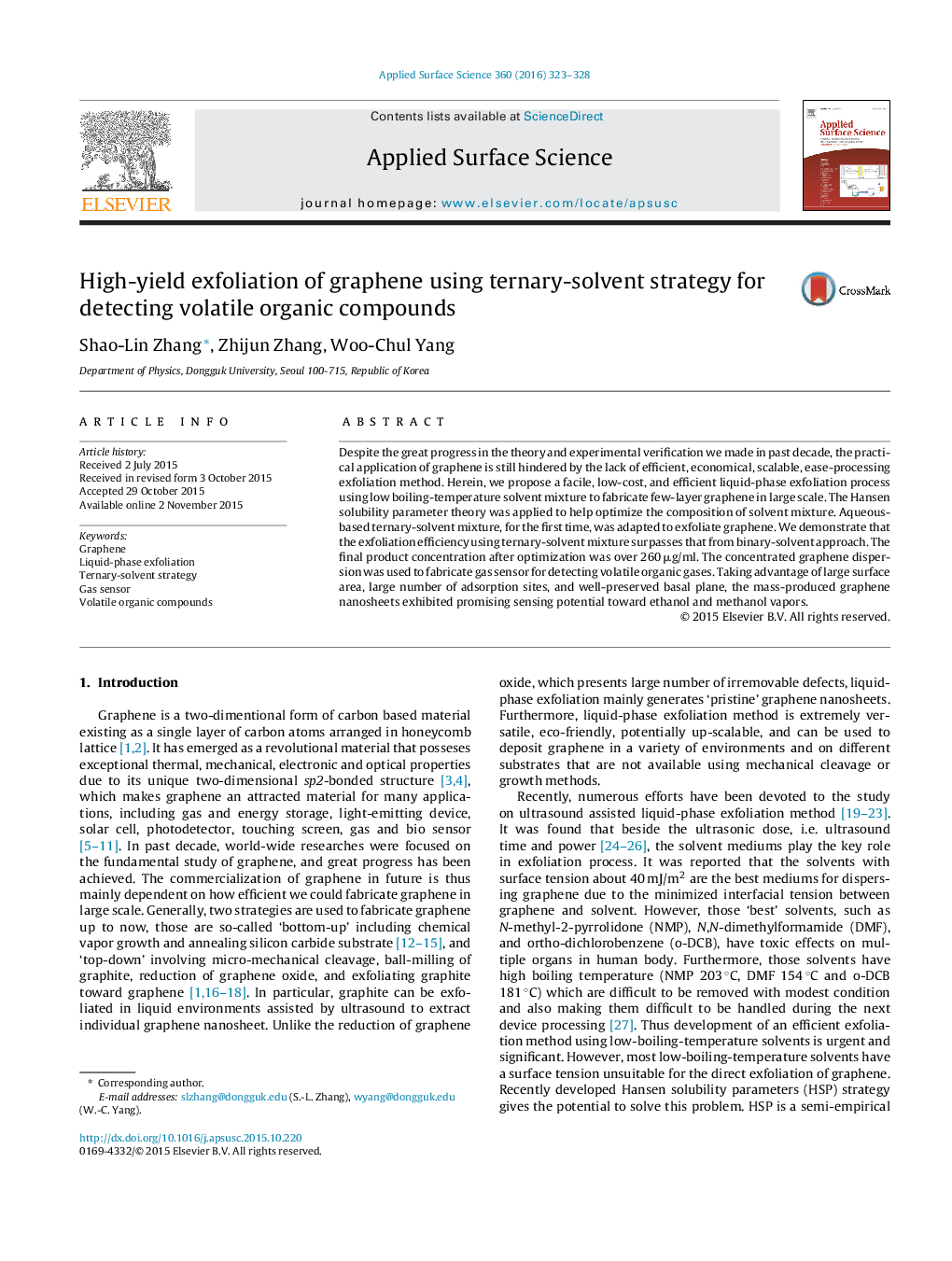| Article ID | Journal | Published Year | Pages | File Type |
|---|---|---|---|---|
| 5353740 | Applied Surface Science | 2016 | 6 Pages |
Abstract
Despite the great progress in the theory and experimental verification we made in past decade, the practical application of graphene is still hindered by the lack of efficient, economical, scalable, ease-processing exfoliation method. Herein, we propose a facile, low-cost, and efficient liquid-phase exfoliation process using low boiling-temperature solvent mixture to fabricate few-layer graphene in large scale. The Hansen solubility parameter theory was applied to help optimize the composition of solvent mixture. Aqueous-based ternary-solvent mixture, for the first time, was adapted to exfoliate graphene. We demonstrate that the exfoliation efficiency using ternary-solvent mixture surpasses that from binary-solvent approach. The final product concentration after optimization was over 260 μg/ml. The concentrated graphene dispersion was used to fabricate gas sensor for detecting volatile organic gases. Taking advantage of large surface area, large number of adsorption sites, and well-preserved basal plane, the mass-produced graphene nanosheets exhibited promising sensing potential toward ethanol and methanol vapors.
Related Topics
Physical Sciences and Engineering
Chemistry
Physical and Theoretical Chemistry
Authors
Shao-Lin Zhang, Zhijun Zhang, Woo-Chul Yang,
